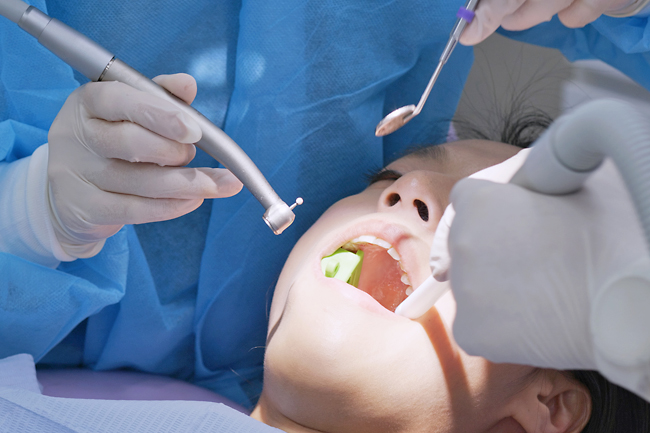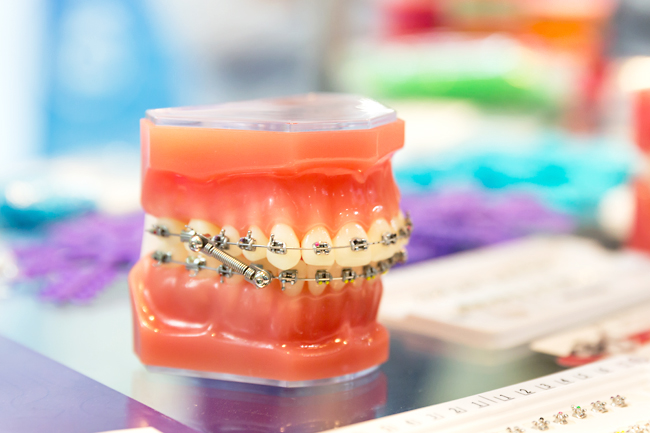ANN/THE STAR – Typically, humans are born without teeth.
While rare, some newborns may present with a natal tooth. However, as we develop, we generally grow two sets of teeth throughout our lives, a process known in dentistry as the development of dentitions.
These are called the primary and secondary dentitions.
The primary set of teeth begins to appear in the mouth at around six months of age.
From then until around the age of three years, there will be a total of 20 primary teeth that emerge (or erupt in dental terms) into the mouth or oral cavity.
These teeth have various names, such as incisors, canines and molars, which are based on their shape, position and function.


In the primary dentition, there should be eight incisors, four canines and eight molars.
A complete healthy set of teeth will allow good development of the jaw bone.
Additionally, they are important to the general well-being of the child as the child experiences the different consistencies, tastes and textures of food.
The secondary set of teeth begin to develop at around six years of age and comprises of 32 teeth in total.
In addition to the incisors, canines and molars, there are premolars too, totalling eight teeth in each quadrant of the mouth.
Therefore, in the secondary dentition, there should be eight incisors, four canines, eight premolars and 12 molars.
All the secondary teeth, apart from the third molars (ie the four wisdom teeth) should emerge by around 13 years of age.
The wisdom teeth commonly emerge between 17 and 25 years of age.
However, they may sometimes stay impacted in the bone or only emerge partially into the oral cavity.
Every secondary tooth emerges in a sequence, ie upon the shedding of the primary tooth.
As the primary tooth loosens and comes out (or exfoliates in dental terms), the secondary tooth emerges into that space.
Additional space may be obtained through the growth of the jaws.
HOW THE TEETH BITE
Occlusion is the way the teeth in the upper and lower jaw bite together.
Teeth are arranged harmoniously to ensure optimal function and health of all the supporting structures.
Jaw development must occur optimally to accommodate all the teeth in the ideal position.
In a normal occlusion, the upper and lower teeth bite harmoniously, without causing any trauma to the teeth or to the soft tissues.
Teeth in abnormal occlusion will develop into various types of malocclusions, which may be treated with different orthodontic methods.
Orthodontics is the branch of dentistry that deals with facial growth and the development of dentition and occlusion.
It involves the diagnosis, intervention and treatment of malocclusion.
Orthodontic treatment aims to correct or improve any malocclusion.
There are various options to choose from depending on the type and severity of the malocclusion. The four most common treatment categories are:
Doing nothing, ie accepting and living with the malocclusion after being made fully aware of the risks and benefits of treatment; growth modification; orthodontic camouflage; and orthognathic surgery.
Additionally, the method of orthodontic correction depends on the age of presentation.
START SCREENING NOW
It has been recommended that a child gets an orthodontic screening at about the age of seven years.
This is when the primary set of teeth is sequentially transforming into the secondary set of teeth.
The primary teeth loosen and come out one by one, and are replaced by their secondary successors.
Both sets of teeth co-exist for a while until eventually, the primary set is entirely replaced, with only the secondary teeth present in the mouth.
The main aim of an orthodontic consultation would be to allow the orthodontist to assess the general facial and dental development of the child, and identify if there is any abnormality developing.
Indirectly, it will encourage and educate parents and child to develop a habit of attending an annual dental review for continuous monitoring of the development and eruption of the other teeth.
Regular visits can allow the orthodontist to identify any developing malocclusions and to decide the appropriateness and need for timely orthodontic intervention.
Dental or facial abnormalities that begin to manifest at an early age are termed as developing malocclusions.
Some of these malocclusions can benefit from early orthodontic intervention.
With early intervention, the malocclusion can be corrected completely or made less complex in the future.
Although, it has been recommended to attend an orthodontic consultation at the age of seven years, nevertheless, any time is perfect to consult an orthodontist to clear your worries. You can visit an orthodontist even as an adult; it is never too late.
The intention is to get your doubts cleared and receive sound advice from a qualified specialist orthodontist pertaining to your concern.
It is always suggested to consult a relevant expert for a thorough assessment, investigation and diagnosis.
SEE THE DENTIST
Visiting the general dentist annually is always a good practice.
General dentists are frontliners who will be able to identify and detect any problems in a timely manner, if visited regularly.
Upon completing the dental examination and treatment, the dentist will be able to suggest a relevant dental specialist, including an orthodontist, should you need further specialised consultation and treatment.
Additionally, check your teeth regularly by yourself.
If there seems to be anything different between the right/left or upper/lower sides of your jaw, or any new development in your teeth or mouth, you could visit the dentist to get it checked.
If you realise there has not been a tooth replacing a primary tooth that has come out in a child, while the contralateral tooth has erupted for more than six months, you should visit an orthodontist.
A contralateral tooth is one that is in the same position of the original tooth, but on the other side of the mouth at the same level.
At times, a tooth can be impacted in the bone because of obstruction, or at other times, the secondary tooth never develops at all.
There are various reasons for any malocclusion to develop.
Some malocclusions benefit from early intervention, while some can wait.
Hence, it is always ideal to have an orthodontist to evaluate and decide on the management of the malocclusion.
In conclusion, recognising developing malocclusions early is prudent for the general growth and development of the child.
It is wise to visit an orthodontist to get screened, as the child may benefit from treatment and for reassurance. – Associate Professor Dr Saraswathy Devi Sinniah


